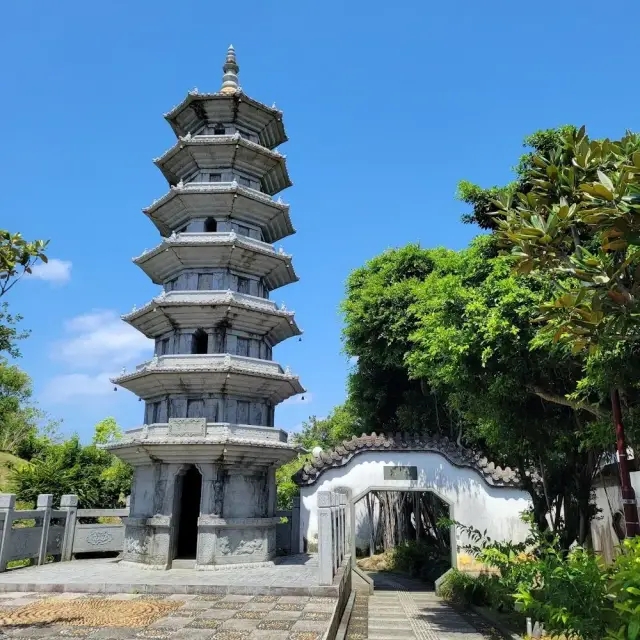https://www.dekitabi.com/itinerary/kokusai-street-namikami-palace-tour
Naha, the vibrant capital city of Okinawa Prefecture, offers an array of cultural, historical, and scenic attractions that captivate visitors. From serene gardens to bustling shopping streets, Naha presents a blend of traditional and modern experiences. This guide will delve into four must-visit locations: Fukushuen Garden, Naminoue Shrine, Kokusai Street, and Tsuboya Yachimun Street.
Fukushuen Garden: A Tranquil Oasis in the Heart of Naha

https://www.dekitabi.com/attraction/fukushuen-garden
Fukushuen Garden is a picturesque Chinese-style garden located in Naha, embodying the historical connection between Okinawa and China. Built in 1992 to commemorate the sister city relationship between Naha and Fuzhou, Fukushuen Garden is a haven of tranquility amidst the urban landscape.
The garden features traditional Chinese architecture, serene ponds, and lush greenery, creating a peaceful retreat. Visitors can wander through scenic pathways, over stone bridges, and past waterfalls, all meticulously designed to reflect Chinese landscaping principles. The garden’s pavilions and pagodas offer perfect spots for reflection and photography, making it a favorite for tourists seeking a peaceful escape.
Naminoue Shrine: A Spiritual Landmark Overlooking the Sea

https://www.dekitabi.com/attraction/naminoue-shrine
Naminoue Shrine is one of Okinawa’s most significant Shinto shrines, perched on a cliff with breathtaking views of the East China Sea. The shrine’s name, “Naminoue,” translates to “Above the Waves,” highlighting its scenic location and spiritual significance.
Naminoue Shrine is deeply rooted in Okinawan history and culture, believed to protect seafarers and ensure safe voyages. Visitors can explore the main hall, admire the intricate architectural details, and partake in traditional rituals. The shrine’s annual festivals and events, such as the New Year’s celebrations and the Naminoue Festival, draw large crowds and offer a glimpse into local customs and traditions.
Naha Kokusai Street: A Shopper’s Paradise

https://www.dekitabi.com/attraction/naha-kokusai-dori-shopping-street
Naha Kokusai Street, or “Kokusai Dori,” is the bustling heart of Naha’s shopping and entertainment scene. Stretching for about two kilometers, this vibrant street is lined with shops, restaurants, cafes, and entertainment venues, offering a lively atmosphere day and night.
Kokusai Street is a haven for shoppers, with an array of stores selling everything from traditional Okinawan crafts to the latest fashion trends. Visitors can sample local delicacies, such as Okinawa soba and sata andagi (Okinawan donuts), at numerous eateries. The street also hosts cultural performances and events, providing a dynamic experience for all visitors.
Tsuboya Yachimun Street: The Pottery District

https://www.dekitabi.com/attraction/tsuboya-yachimun-street
Tsuboya Yachimun Street, known as the pottery district of Naha, is a charming area dedicated to the traditional craft of Okinawan pottery, or “yachimun.” This historic street is lined with pottery shops, studios, and galleries, showcasing the artistry and heritage of yachimun.
Visitors can explore the various shops to find unique pottery pieces, ranging from everyday tableware to intricate decorative items. Many studios offer pottery-making workshops, allowing tourists to create their own yachimun souvenirs. The street’s quaint atmosphere, with its cobblestone paths and traditional buildings, adds to its appeal as a cultural and artistic destination.
Exploring Naha: A Blend of Tradition and Modernity
Naha, with its rich cultural heritage and vibrant modern attractions, offers a diverse range of experiences for visitors. From the serene beauty of Fukushuen Garden and the spiritual ambiance of Naminoue Shrine to the bustling energy of Kokusai Street and the artistic charm of Tsuboya Yachimun Street, each location provides a unique glimpse into the heart of Okinawan culture.
When planning your visit to Naha, consider these attractions as key highlights of your itinerary. Each site not only offers a distinct experience but also contributes to a comprehensive understanding of the city’s cultural and historical landscape.


Leave a Reply